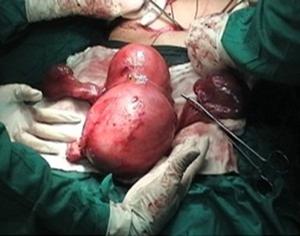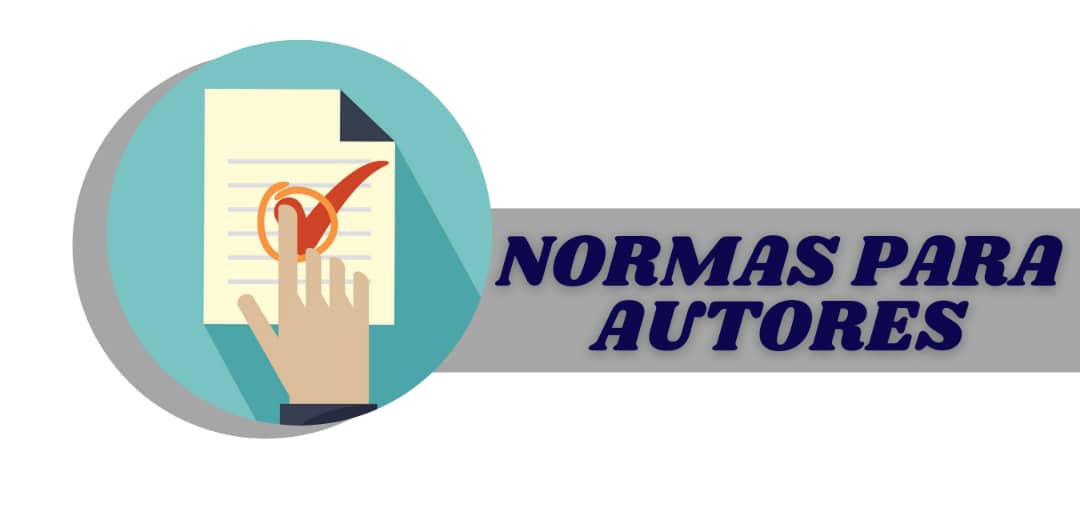Mioma uterino, un trastorno frecuente en mujeres de edad fértil.
Palabras clave:
leiomioma, leiomyoma, fibroma, neoplasias uterinas, uterine neoplasmsResumen
Se realizó una revisión bibliográfica actualizada de 25 artículos con el propósito de describir el fibroma uterino, teniendo en cuenta los factores de riesgo, tipos de fibromas, cuadro clínico, aspectos esenciales para su diagnóstico y tipos de tratamientos según las tendencias actuales. Se concluyó que: entre los factores predisponentes de padecer fibroma uterino se encuentran la edad, la obesidad, nuliparidad, entre otros. El cuadro clínico depende del tamaño y localización del fibroma, las manifestaciones más comunes son: sangramiento, dolor, tumor y compresión. El tipo de fibroma más frecuente es el intramural. En la conducta a seguir se debe tener en cuenta: edad, paridad, el número, tamaño y localización de los miomas, y el deseo de nuevos hijos; el tratamiento puede ser farmacológico, quirúrgico y/o con Medicina Natural y Tradicional.
Citas
Cutié ML, Figueroa M, Almaguer JA, Veranes M. Estudio del factor uterino como causa de infertilidad femenina. Rev Cubana Obstet Ginecol. 2000; 26(1): 54-61. [citado 6 Oct 2011] Disponible en: http://bvs.sld.cu/revistas/gin/vol26_1_00/gin09100.htm
González D, Hierresuelo D, Misiara A. Mioma uterino parido, presentación de un caso. Rev 16 de abril. 2014; 53(254): 92-98
Giné L, Sabri? E, Ponce J, Sanchez A, Fernández ME. Clínica y diagnóstico del mioma uterino. Estado actual. Ginecología y Obstetricia Clínica. 2009; 10(1): 15-20. [citado 6 Mar 2012] Disponible en: http://www.nexusmedica.com/web/resumen_ant.php?id_revista=664&id=17734&Ano=2009&Numero=1&sol=1
Katz VL, Lobo RA, Lentz G, Gershenson D. Comprehensive Gynecology. 5th ed. Philadelphia: Elsevier Mosby; 2007. p. 441-47.
Briceño C, Alaña F, Briceño L, Briceño JC. Gran mioma uterino y embarazo, reporte de un caso. Rev Obstet Ginecol Venez. 2004; 64 (2): [citado 2012 Sep 07] Disponible: http://www.scielo.org.ve/scielo.php?script=sci_arttext&pid=S0048-77322004000200007&lng=es
Rigol O. Obstetricia y ginecología. La Habana: Editorial Ciencias Médicas; 2004. p. 293-5.
Towbin NA, Gviazda IM, March CM. Office hysteroscopy versus transvaginal ultrsonography in the evaluation of patients with excessive uterine bleeding. Am J Obstet Gynecol. 2008; 174(6):1678-82.
Puertas N. Ultrasonido ginecobstétrico. La Habana: Editorial Ciencias Médicas; 2006. p. 26-33.
Dueholm M, Lundorf E, Hansen ES, Ledertoug S, Olesen F. Evaluation of the uterine cavity with magnetic resonance imaging, transvaginal sonography, hysterosonographic examination, and diagnostic hysteroscopy. Fertile Steril. 2009; 76:350-357.
Keckstein J, Hucke J. Cirugía laparoscópica en ginecología. Madrid: Editorial Médica Panamericana; 2008: 377-393.
Viswanathan M, Hartmann K, McKoy N, Stuart G, Rankins N, Thieda P, et al. Management of uterine fibroids: an update of the evidence. Evid Rep Technol Assess. 2007; 154: 1-122.
Evans P, Brunsell S. Uterine Fibroid Tumors: Diagnosis and Treatment. Am Fam Physician. 2007; 75: 1503-60.
Zupi E, Zullo F, Marconi D, Sbracia M, Pellicano M, Solima E, et al. Hysteroscopic endometrial resection versus laparoscopic supracervical hysterectomy for menorrhagia: a prospective randomized trial. Am J Obstet Gynecol. 2003; 188(1):7-12.
Lethaby A, Vollenhoven B, Sowter M. Pre-operative GnRH analogue therapy before hysterectomy or myomectomy for uterine fibroids. Cochrane Database Syst Rev. 2011; 2: CD000547.
Reim MS, Barbier RL, Friedman AJ. Progesterone: a critical role in the pathogenesis of uterine myoma. Am J Obstet Gynecol. 2005; 172:14-8.
Wilson EA, Yang F, Reese E. Estradiol and progesterone binding in uterine leiomyomata and in normal uterine tissues. Obstet Gynecol. 2010; 55: 20-4.
Carbonell JL, Acosta R, Heredia B, Pérez Y, Valle A. Ulipristal for the treatment of uterine leiomyomas. Obstet Gynecol.2008; 112: 1029-36.
Eisinger SH, Meldrum S, Fiscella K, Le Roux H, Guzick D. Low-dose mifepristone for uterine leiomyomata. Obstet Gynecol. 2003; 101:243-50.
Chong RKL, Thong PH, Tan SL, Thong P, Salmon YM. Myomectomy: Indications, results of surgery and relation to fertility. Singapore medical journal. 2000; 29:35-7.
Zhang H. Chinese herbal medicine combined with transcatheter arterial embolization for treatment of 21 cases of uterine fibroids. Shandong Journal of Traditional Chinese Medicine. 2005; 24(12): 725-6.
Moss J, Cooper K, Khaund A. Randomised comparison of uterine artery embolisation (UAE) with surgical treatment in patients with symptomatic uterine fibroids (REST trial): 5-year results. BJOG. 2011; 118(8):936-944.
Loffer FD. Endometrial ablation in patients with myomas. Curr Opin Obtest Gynecol 2006; 18: 391-3.
Bernard G, Darai E, Poncelet C, Benifla JL. Fertility after hysteroscopic myomectomy: effect of intramural myomas associated. European Journal of Obstetrics and Gynaecology and Reproductive Health. 2011; 88:85-90.
Rigol O. Acupuntura y ginecología. Manual de Acupuntura y Digitopuntura para el médico de la familia. Ciudad de La Habana: Ciencias Médicas; 1992.

Descargas
Publicado
Cómo citar
Número
Sección
Licencia
Aquellos autores/as que tengan publicaciones con esta revista, aceptan los términos siguientes:
Los autores/as conservarán sus derechos de autor y garantizarán a la revista el derecho de primera publicación de su obra, el cuál estará bajo una Licencia de Creative Commons Reconocimiento-NoComercial 4.0 Internacional (CC BY-NC 4.0)
Los autores/as podrán adoptar otros acuerdos de licencia no exclusiva de distribución de la versión de la obra publicada (p. ej.: depositarla en un archivo telemático institucional o servidores preprint) siempre que se indique la publicación inicial en esta revista.
Se permite y recomienda a los autores/as difundir su obra a través de Internet (p. ej.: en archivos telemáticos institucionales o en su página web) antes y durante el proceso de envío, lo cual puede producir intercambios interesantes y aumentar las citas de la obra publicada.







